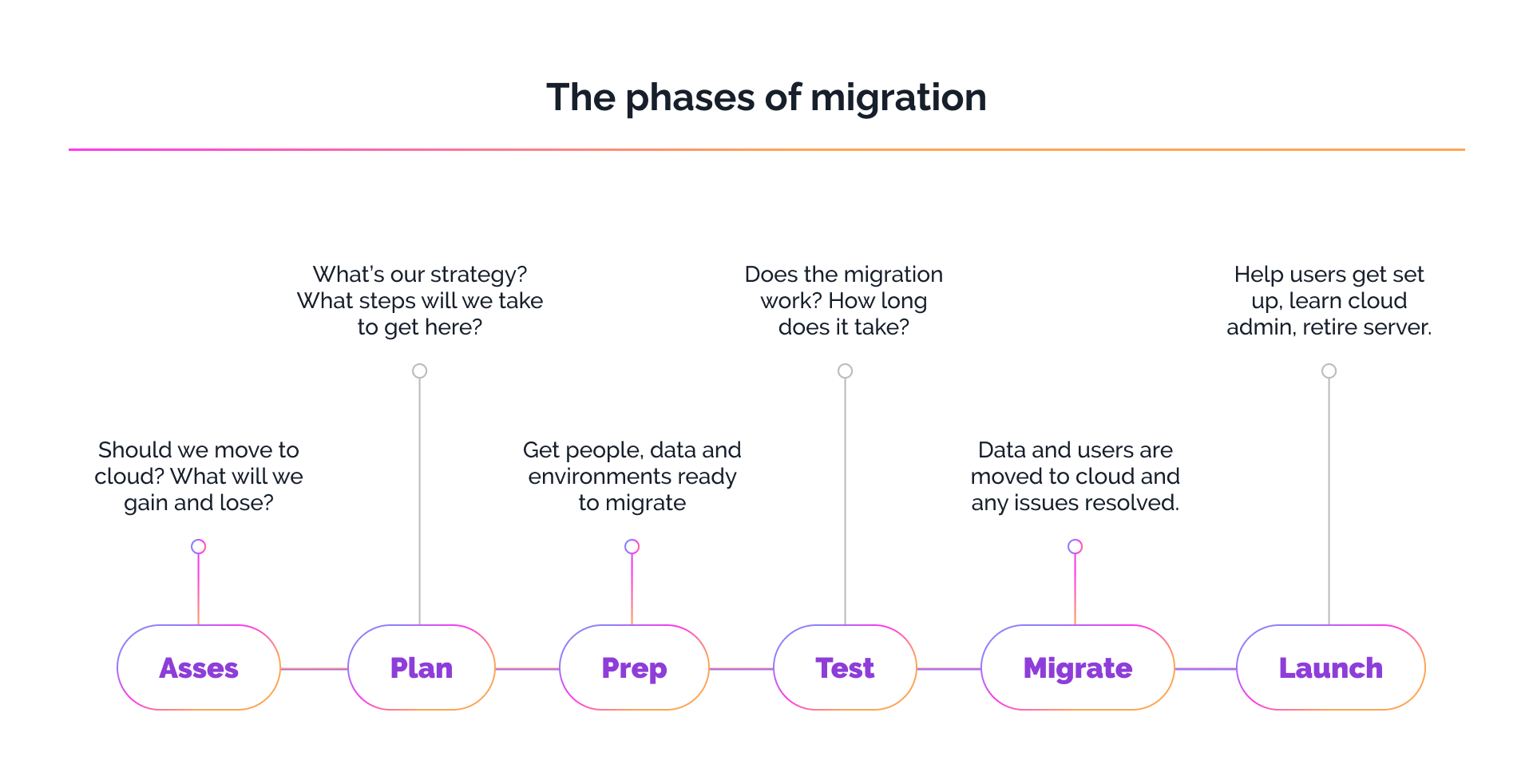
Migrating Existing Web Applications to the Public Cloud

Migrating web applications to the public cloud is a strategic move that many businesses are making today. Cloud service providers give access to online resources such as servers or disk space. These resources are scalable and available from any device. The implementation of such a technologically advanced solution brings many benefits to the company, its employees, finances, and even data security. If your company has an existing web application, it’s a good idea to move it to the public cloud. How (and why) should you do so?
What are the benefits of migrating to the cloud?
There are at least several reasons why many companies and organizations decide to migrate to cloud.
Reliability
One of the advantages of using the cloud is the reliability of such a solution. Cloud services are a way to obtain constant, unlimited access to web applications and information stored in the cloud. A good example of a company using cloud services is Netflix that operates online and is available 24/7.
Flexibility
Full flexibility is also a very important benefit. Using applications installed directly on a company computer may lead to technical problems. It can also be overloaded due to excessive computational demands. When this happens, the applications do not work properly, which affects the entire workflow. This also means downtime and interruptions in the operation of web applications. The public cloud is the solution.
Additionally, cloud-based environments offer a multitude of solutions – different architectures (ARM, x86), popular applications offered as ready-to-use services (databases, Elastic Search, etc.), VMs or containers, multi-tier storages – all these possibilities allow fitting the cloud infrastructure even to the most sophisticated needs.
Costs
Migration of web applications to the cloud also means savings for the company’s budget. Creating your own secure infrastructure involves large investments in equipment beforehand. Maintaining such infrastructure and ensuring its security is also associated with high expenses. A more economical solution is to use a ready-made, advanced solution. A very good example is Unilever, which earlier this year decided to move its entire marketing platform to the cloud1. As a result, the company significantly improved customer service, product launches, and operational efficiency.
Scalability
All the flexibility mentioned is dynamic – cloud infrastructure can be scaled on-demand, even automatically. If many individuals use web applications at the same time, traffic spikes are very well handled by such a cloud, depending on demand. This is extremely important, especially in a situation when you can expect growing traffic.
Amazon is a good example of such a business. This e-commerce giant manages spikes and traffic on its site very well, as they have access to their own extensive cloud infrastructure known as AWS. As a result, ordinary users do not feel a decrease in efficiency when using their websites and web applications. This is very critical, e.g., during holidays and other occasions when interest in online shopping increases dramatically. Cloud-based autoscaling is a great convenience for any business.
Popularity
Lastly, the migration of web applications to the cloud is becoming more and more popular. In fact, in many companies, cloud-based solutions are simply expected by employees because of the benefits they offer, with remote work possibilities being essential (According to FlexJobs’ Career Pulse Survey from 2022, 65% of respondents want to work remotely full-time, or at least partly (32% of answers)2.
In many companies, this is already a standard, which is why this solution is being talked about more and more often. Thanks to this, you can count on community support and increase your competitiveness, which was done, for example, by Adobe. Today, some of the biggest and most extensive cloud providers are, for example, AWS, Azure, and Google Cloud.
Differences in the deployment process
When you decide to use the cloud, you can also count on full support in management because it is a comprehensive service. For example, AWS Elastic Beanstalk or Google App Engine help with deploying and managing web applications without worrying about the entire infrastructure. It’s an easy-to-use service that enables quick application upload, scaling, and management.
Read also: What is project risk?
Scenarios where cloud migration might not be beneficial
In some circumstances, though, migrating to cloud may not be the best choice. These include:
- Monolithic applications: If it is difficult to break down such applications into many independent components, then many of the cloud benefits are unusable, hence the viability of such migration is questionable.
- Steady-load applications: Cost benefits of cloud solutions come from the fact that most applications have a changing load over time (e.g., a company CRM works during working hours, after that it can be turned off do save money). If the application has a constant load, buying and maintaining a hardware might still be a better approach.
- Resource-hungry applications: This is somewhat related to the steady load argument above, but also because cloud adds some layers of abstraction, an application on bare-metal will perform better.

Steps to migrate a web application to the cloud
The first step in migrating a web application to the cloud is to check its cloud readiness. This step is crucial before migrating to the cloud. Now, let’s have a look at some of the most important elements to consider:
Microservices and cloud-friendly components
In the second step, you should divide the web application into smaller microservices. Thanks to this, its scaling and the ability to work on the application will be more flexible. Try to abstract components into readily-available services, such as database or Elastic Search.
How to create the app architecture
Creating an app architecture for the cloud requires specifying the number of nodes. One node is a single unit of computing that is necessary to perform work. You also need to specify the types of services migrated to the cloud, such as databases, messaging queues, and caching. Don’t forget about autoscaling rules and the choice of region. Thanks to this, maintenance costs will be optimized, and delays will be kept to a minimum.
Interfaces
An application has to have a set of well-defined interfaces for monitoring, metrics and logging. These are crucial for maintenance, further development, or even autoscaling. Bear in mind that every cloud provider may have slightly different approach / API for these features.
Choosing a public cloud provider
When choosing a public cloud provider, you should pay attention to its financial stability, risk management skills, planning skills and extensive technical experience.
Its business offer, the cost of individual services, and the guarantee of reliability and effective administration of resources are also of great importance. The contract signed with the supplier should contain information about the basic level of service it guarantees.
A provider must have the appropriate technical facilities, standard interfaces for data transfer, an event management system, and a well-developed security infrastructure.
The choice is also influenced by the company’s budget and the adjustment of the offer to the specific needs and expectations of the business. The largest public cloud service providers are AWS, Google Cloud, and Azure.
Deployment tools
Using deployment tools when deploying web applications in the cloud can make the deployment more efficient and automated. This is a way to streamline the entire process and save time. It’s best to use them in very complex environments. The most commonly used tools are Helm for Kubernetes or Terraform.
Migration of web applications to the cloud is associated with many benefits, although its implementation is not the easiest task. However, a well-conducted migration will ensure reliability and scalability, which dynamically developing businesses care about the most.
If you want to migrate your web app to the public cloud, we are at your service. Take a look at our case studies, and if you think that we can be a good fit for your company – drop us a line! We can kick things off with a free project consultation.
